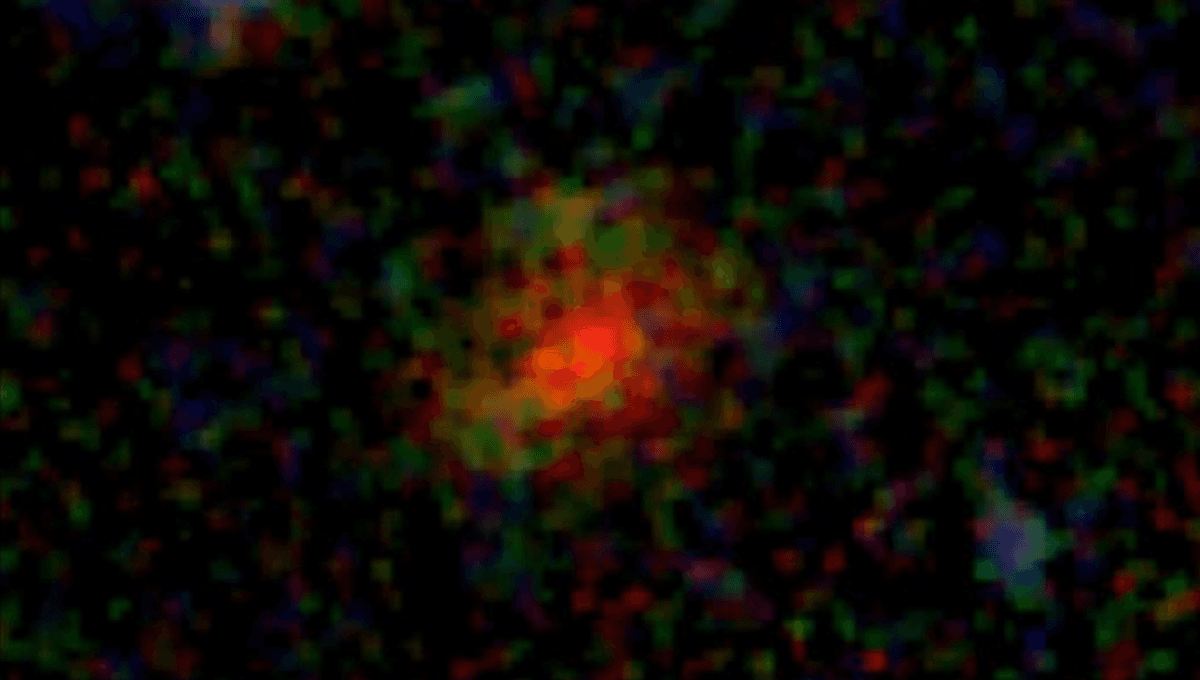
A distant dusty galaxy has been rediscovered by astronomers and its existence – and that of a dozen similar galaxies – is rewriting what we know about these objects in the early universe. Galaxy AzTECC71 is massive, forming a lot of stars, and its light comes to us from just 900 million years after the Big Bang. Galaxies like this should have been extremely rare back then, but now astronomers think they might be three to 10 times more common than expected.
The discovery is exciting and the team is continuing to follow up to confirm that their best understanding of this object is indeed correct. If it is, there was a lot more dust in the early universe than astronomers thought possible.
“This thing is a real monster,” lead author Jed McKinney, a postdoctoral researcher at The University of Texas at Austin, said in a statement. “Even though it looks like a little blob, it’s actually forming hundreds of new stars every year. And the fact that even something that extreme is barely visible in the most sensitive imaging from our newest telescope is so exciting to me. It’s potentially telling us there’s a whole population of galaxies that have been hiding from us.”
Dust shrouds galaxies, blocking their visible light and only emitting in infrared, even in prolific star-forming objects like this one (it forms the equivalent of 800 new stars like the Sun every year). The dustiness is only half of the story of the galaxy’s discovery and disappearance; the galaxy is also really far away and due to the expansion of the universe, the light of this galaxy is redshifted, pushed even further into the infrared realm.
Several observatories on Earth saw this galaxy, spotting a fuzzy, possibly distant object. But follow-up observations with Hubble – up until 2022, our crucial distant galaxy hunter – came back with nothing. No galaxy was to be found.
“Until now, the only way we’ve been able to see galaxies in the early universe is from an optical perspective with Hubble,” added McKinney. “That means our understanding of the history of galaxy evolution is biased because we’re only seeing the unobscured, less dusty galaxies.”
JWST, however, sees far more into the infrared range than Hubble ever could and its enormous mirror allowed this galaxy to be rediscovered and its properties estimated.
“With JWST, we can study for the first time the optical and infrared properties of this heavily dust-obscured, hidden population of galaxies,” McKinney said, “because it’s so sensitive that not only can it stare back into the farthest reaches of the universe, but it can also pierce the thickest of dusty veils.”
The discovery is part of the COSMOS-Web collaboration and the re-discovery is published in The Astrophysical Journal.
Source Link: Disappearing Galaxy Reappears And Changes Our Understanding Of Galaxy Evolution